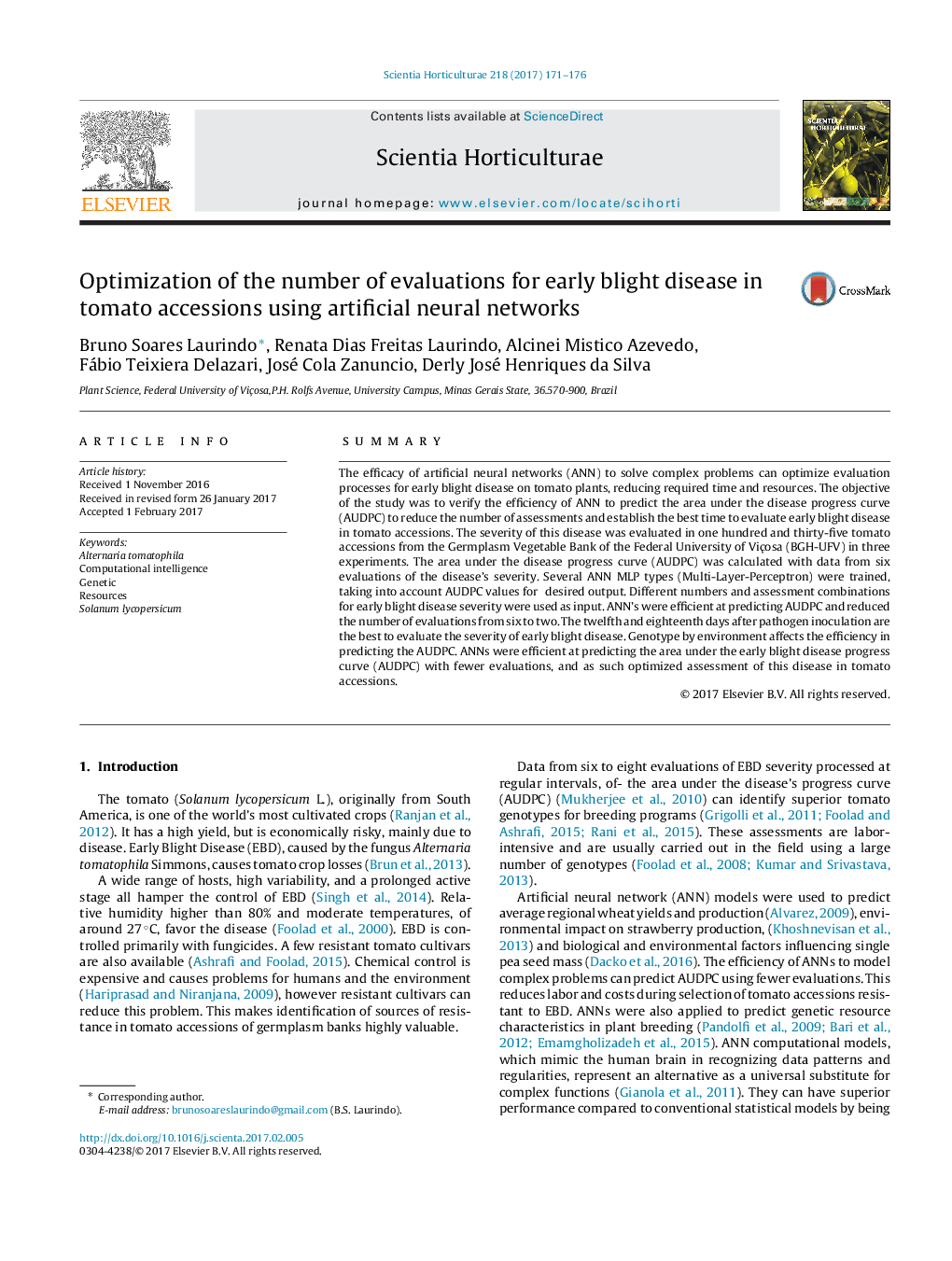| Article ID | Journal | Published Year | Pages | File Type |
|---|---|---|---|---|
| 5769541 | Scientia Horticulturae | 2017 | 6 Pages |
â¢ANNs were effective at predicting the area under Early Blight Disease progress curve.â¢Optimizing the assessment efficiency for disease severity reducing from six to two the number.â¢Evaluations to be carried out on the twelfth and eighteenth days after inoculation of this disease.
SummaryThe efficacy of artificial neural networks (ANN) to solve complex problems can optimize evaluation processes for early blight disease on tomato plants, reducing required time and resources. The objective of the study was to verify the efficiency of ANN to predict the area under the disease progress curve (AUDPC) to reduce the number of assessments and establish the best time to evaluate early blight disease in tomato accessions. The severity of this disease was evaluated in one hundred and thirty-five tomato accessions from the Germplasm Vegetable Bank of the Federal University of Viçosa (BGH-UFV) in three experiments. The area under the disease progress curve (AUDPC) was calculated with data from six evaluations of the disease's severity. Several ANN MLP types (Multi-Layer-Perceptron) were trained, taking into account AUDPC values for â desired output. Different numbers and assessment combinations for early blight disease severity were used as input. ANN's were efficient at predicting AUDPC and reduced the number of evaluations from six to two. The twelfth and eighteenth days after pathogen inoculation are the best to evaluate the severity of early blight disease. Genotype by environment affects the efficiency in predicting the AUDPC. ANNs were efficient at predicting the area under the early blight disease progress curve (AUDPC) with fewer evaluations, and as such optimized assessment of this disease in tomato accessions.
Graphical abstractDownload high-res image (173KB)Download full-size image
